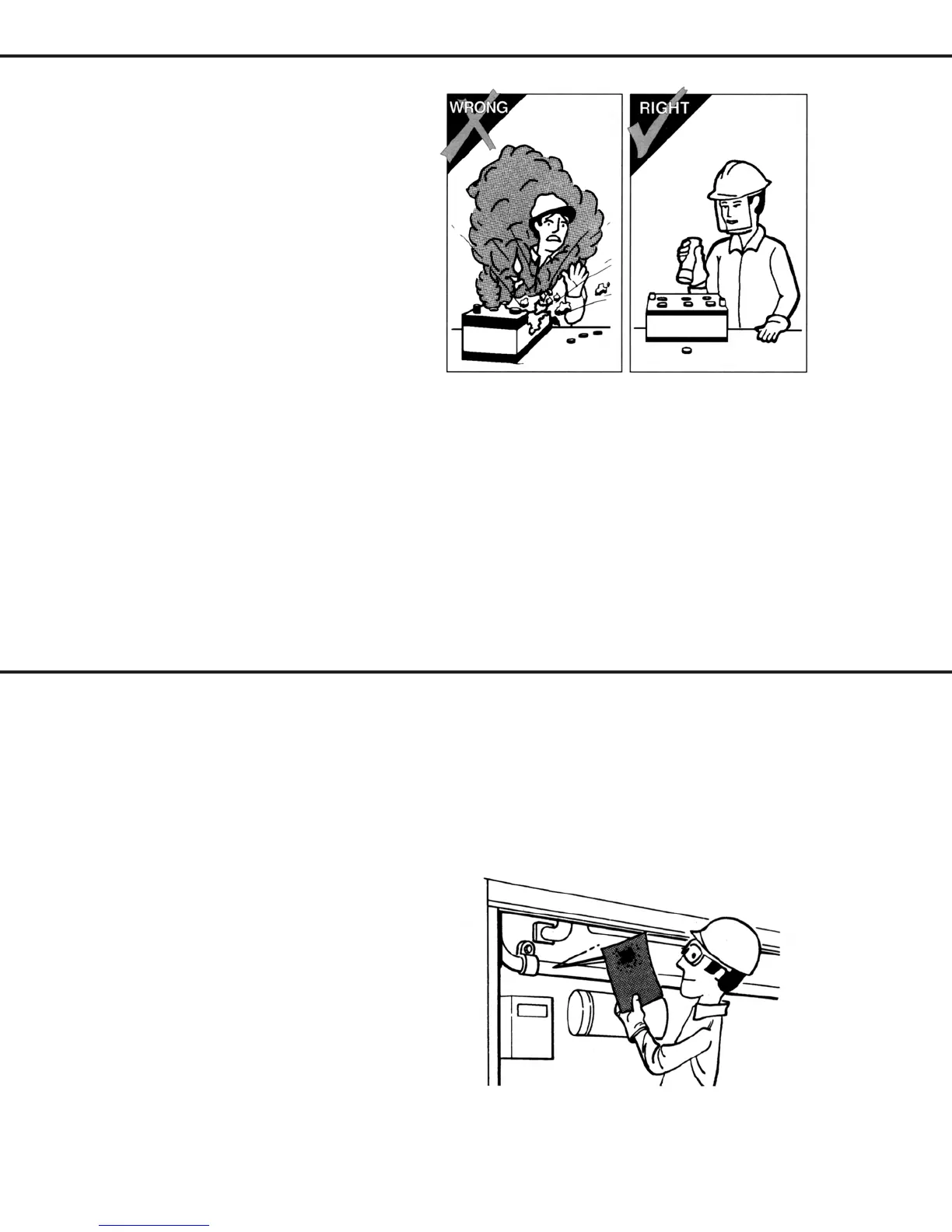39
BATTERY SERVICING
To prevent a battery explosion: (FIG. 44)
• Maintain the electrolyte at the recommended
level. Check level frequently. Add distilled water
to batteries only before starting up, never when
shutting down. With electrolyte at the proper
level, less space is available for gases to accumu-
late in the battery.
• Use a flashlight to check the electrolyte level.
Never use a flame. (FIG. 45)
• Do not short across the battery terminals.
The spark could ignite the gases.
Battery acid will burn skin, eat holes in clothing,
and may cause blindness if splashed into eyes. If
you spill acid on yourself, flush skin immediately
with lots of water. Apply baking soda to help neu-
tralize the acid. If acids get in your eyes, flush imme-
diately with large amounts of water and seek
proper medical treatment immediately.
When servicing batteries, remember that a
lead-acid storage battery generates (when charging
or discharging) hydrogen and oxygen – a very
explosive mixture. A spark or flame could ignite
these gases.
PERFORM MAINTENANCE SAFELY
FIG. 44 FIG. 45
40
HYDRAULIC SYSTEMS
NOTE: Hydraulic Systems have “special features.”
Some of the features affecting your safety are listed
below.
Pressure can be maintained in hydraulic and air
circuits long after the engine has been shut down.
This pressure can cause hydraulic fluid or items
such as pipe plugs to “shoot out” at high speed if
pressure is not released correctly. Release system
pressure before attempting to make adjustments
or repairs.
Consult the manufacturer’s instructions for correct
procedure.
Before disconnecting hydraulic fluid lines, be sure
you:
• Shut off engine.
• Always release any air pressure (supercharge)
on the hydraulic reservoir.
• Move pedals and control levers repeatedly
through their operating ranges to relieve all
pressures.
Pressurized hydraulic fluid can penetrate the
skin and cause serious injury. Therefore, be sure
all connections are tight and that lines, pipes and
hoses are in good condition before starting the
engine.
Fluid escaping from a small hole can be almost invis-
ible. Use a piece of cardboard or wood,
instead of your hands, to search for suspected
leaks. (FIG. 46)
PERFORM MAINTENANCE SAFELY
FIG. 46

